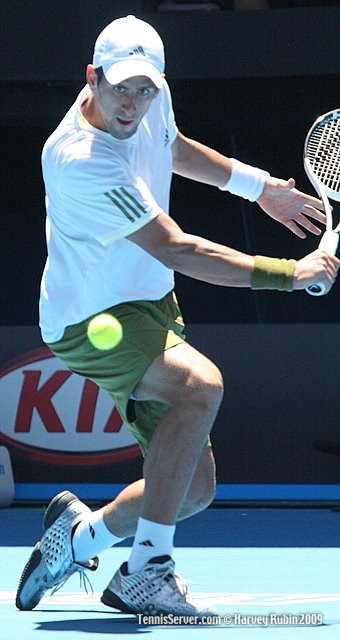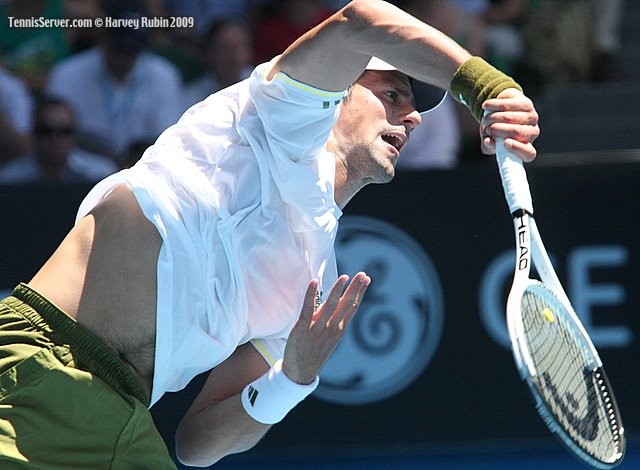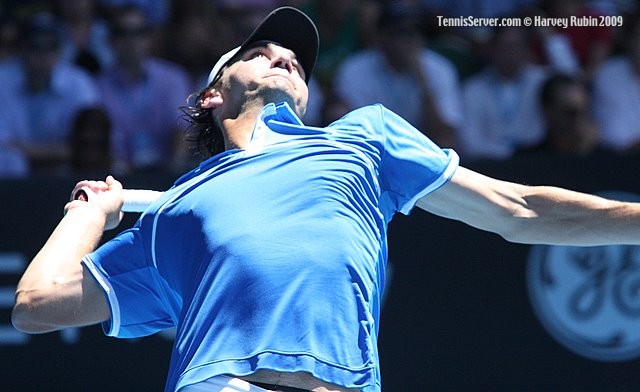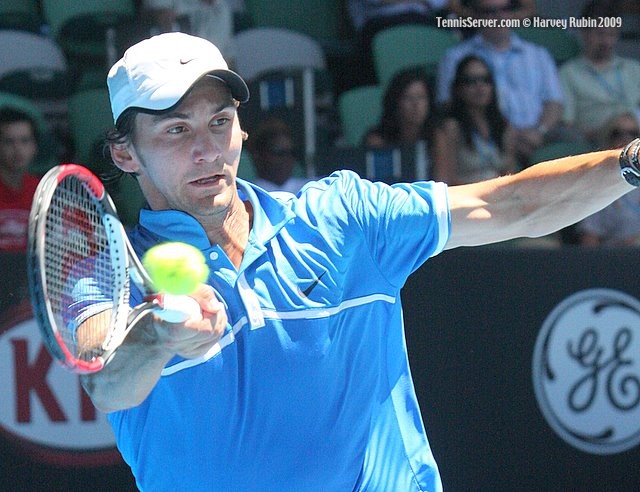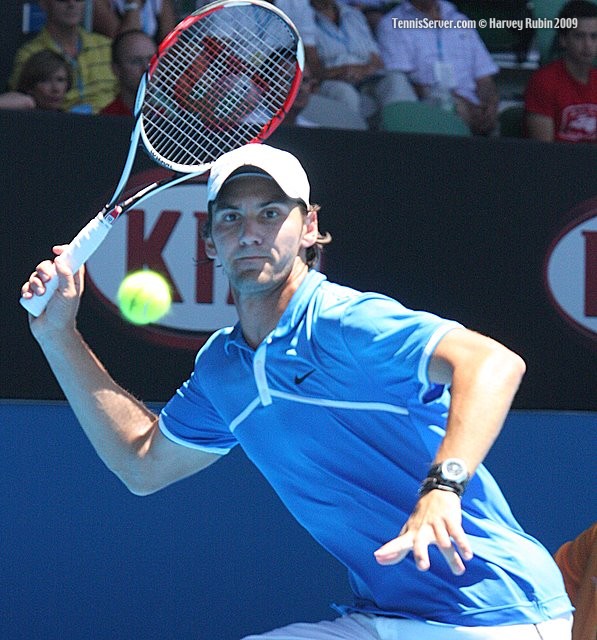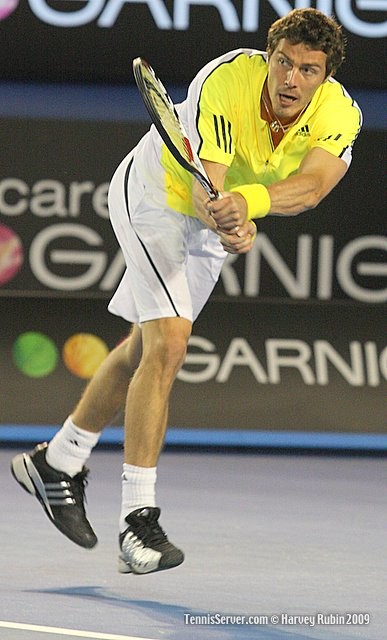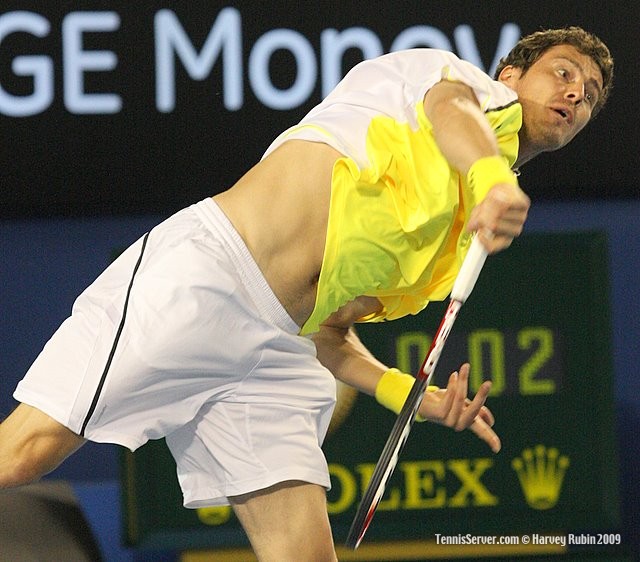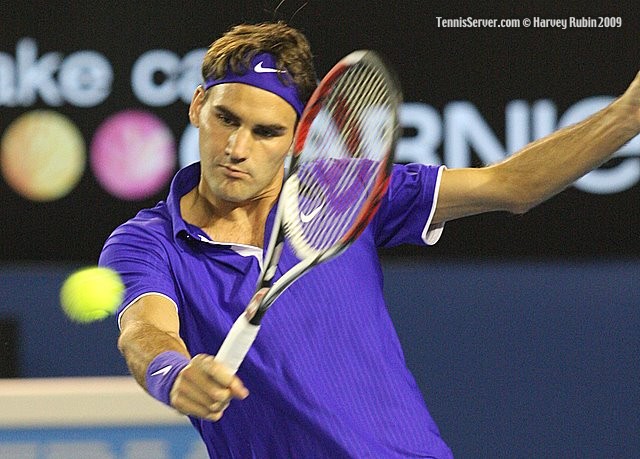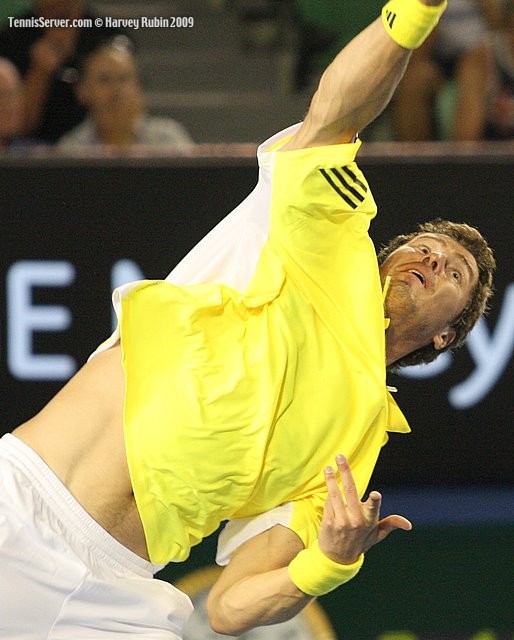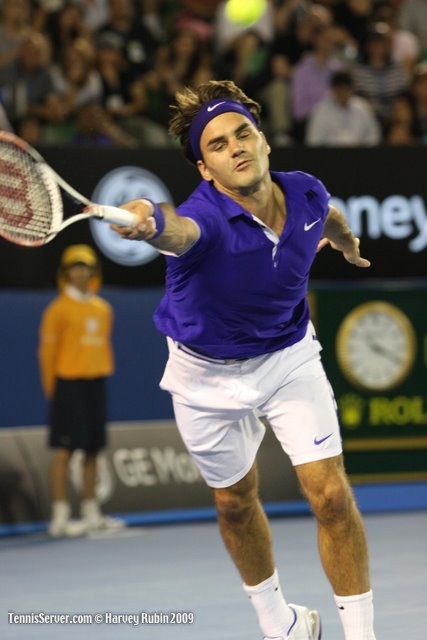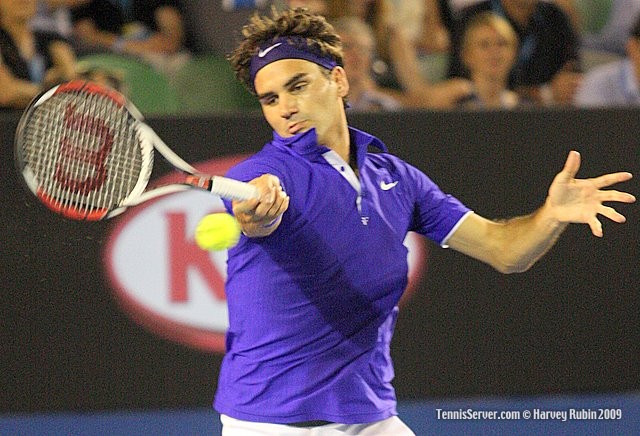Down They Go Down Under
January 23, 2009 -- You have to admit that Alisa Kleybanova fills more than a berth in the elite round of sixteen. Close your eyes for a moment while she plays Jelena Dokic. Listen to the screech she makes as she strikes the ball. It's as if Maria Sharapova were alive, well, and on court fully recovered from shoulder surgery and defending her title. In the third set of Kleybanova's match today, as pressure mounted and her performance skyrocketed to an astronomical level, her screech filled the stadium like helium fills balloons. Up, up and away!
Too bad for the lovely Ana Ivanovic who suffered the pain of power off Alisa Kleybanova's racquet. The fans stood behind Ana, though. They wanted her to stick around until next week when the real fireworks start. Perhaps next year.
In the first set Ana's ball toss angled off to the right. She didn't seem to have any control of where the toss would end up. As a result, she couldn't reach the ball. When she did strike it, her timing and balance were off. The ball found the net too many times. Without confidence from a solid first serve Ana's ground game gave way. She got the ball in play, opened the court with a couple strong groundstrokes, set up the winner, but thwacked it in the net looking way too eager to earn the point instead of keeping her head down. She didn't stay with the shot. It happened time after time. In the first set alone she racked up 14 unforced errors and only 4 winners. That wasn't the Ana we knew.
The fans tried to come to her aid. Their cheers lifted Ana's spirits especially in the second set. They helped her ascend the wave of come-back and ride it through to a set victory, after having been down 0/3. The match was even. Their Ana had a good chance of pulling out the win.
Fans probably figured that she would keep on the pressure, swing freely, and pick up her first serve percentage. But no... the bloodletting continued.
Ivanovic was broken a total of eight times by the nineteen-year-old Russian and #29 seed. She only won 38% of her second serve points. That's dismal for a woman who last year made it to the finals and won the title at Roland Garros.
From the other side of the net, the results represented the best of Kleybanova's Grand Slam history. Last year here she made it to the first round. In her press conference today, Kleybanova told reporters how she felt. "It was definitely the best match in my career so far. It was just so great for me today."
She will play #1 seed Jelena Jankovic next. "I never played on Rod Laver. I'm looking forward to stay out there and play some great tennis."
Marat Safin -- His "Last" AO?
When Marat Safin and Roger Federer face off commentators pick Federer, but they add contingencies. Darren Cahill predicted Roger would defeat Marat today in four sets. It only took three. Since his knee surgery two years ago, Safin just hasn't been the same, but his game never rose to the level of the tennis world's expectations.
His record against Roger is 2/9 -- not great for a big man with a big serve and monstrous groundstrokes. In 2005 Safin did defeat "The Federer," as Marat calls him, in the semifinals of the Australian Open after five tough sets; and, he went on to win the title -- his second major. He won the U. S. Open in 2002, defeating Pete Sampras in three spellbinding sets. The Russian dominated that match. Sampras could do nothing to stop the onslaught of explosive shots, serves, and an intuitive familiarity of the court and how to use it to his sole advantage.
After that the fans expected Safin to continue his climb up the rankings. They wanted him to compete with the top five players. Safin, too, wanted more from himself. But it never did materialize with any consistency.
His moods swung like a pendulum. One year he reportedly demolished close to 80 racquets, according to a sales representative from Head Penn Racquet Sports. His mental moods drove him crazy. They sucked valuable time and concentration away from the task of winning matches. He went through coach after coach. He partied.
We can only imagine in retrospect what he would have contributed if he had made other choices. He sprang on the American scene in 1998 at a Davis Cup tie at Stone Mountain Park, Atlanta, Georgia. On Sunday everything was tied. Marat was scheduled to play Jim Courier in the last rubber, the deciding match. Safin had lost to Andre Agassi on Friday in straight sets. The United States' team thought the 19 year old didn't have much of a chance against the veteran and Davis Cup wonder Courier.
But Safin blitzed Jim at love in the first set. He lost the second set but won the third with one break of serve. If Safin could win another set, the tie would go to Russia. Captain Tom Gullikson coached Courier to start sending junk shots at the smooth-hitting and powerful Safin. The strategy slowly worked and Courier turned the match around. The Americans won the tie in five rubbers. Safin had made his mark on American tennis and international tennis as well.
Stalwart fans always wanted Marat to bust through the clutter in his head and demonstrate to them that he could fight and win. That he could be the #1 player in the world. In November 2000, he reached that lofty position for a few short weeks.
To end a career that probably never fulfilled itself leaves fans sad. However, Marat did the best he could with the tools he had. He wasn't a Sampras who could shelve bad court experiences and move on, a goal his shining star. He wasn't "The Federer" whose discipline and love of the game guides him through ups and downs. Thus to attain a level of satisfaction about Marat Safin's career, we have to accept him and his record and his fiery temper.
Expectations are selfish. They represent us, not him. Hopefully, his decision to retire will be reversed. You never know with Safin. He could lumber back on to Rod Laver Arena next year and pull off a miracle. But, we can't expect it.





 You will join 13,000 other subscribers in receiving news of updates to the Tennis Server along with monthly tennis tips from tennis pro Tom Veneziano.
You will join 13,000 other subscribers in receiving news of updates to the Tennis Server along with monthly tennis tips from tennis pro Tom Veneziano. 



